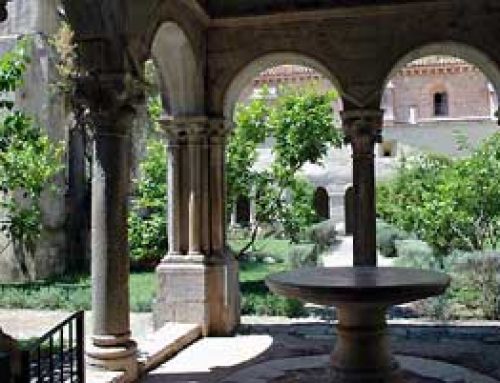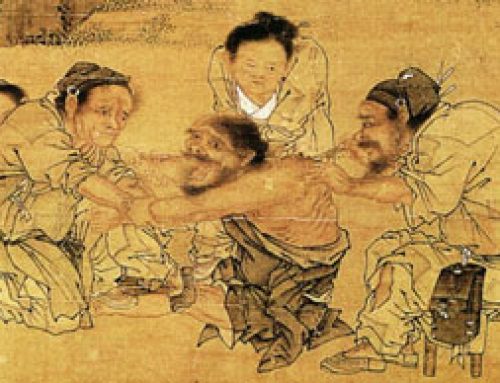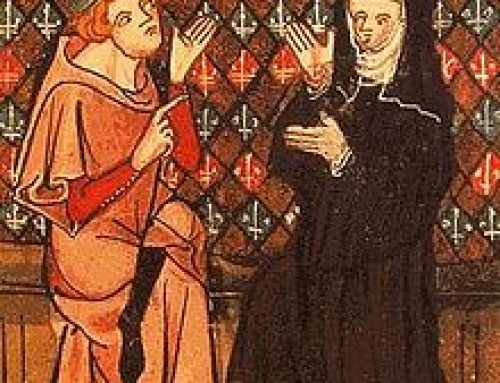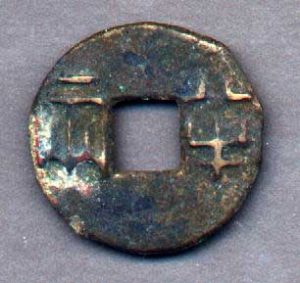
Silk Road trade: Chinese coin of the Han Empress Kuo
Empires and the Silk Road
Starting in the 500s BC, governments started to come together into empires. Travel got safer. Traders could travel long distances without running into wars.
Empires timeline
Who were the Sogdians?
The rise of the Silk Road
All our Central Asia articles
The Sogdians in Central Asia (Afghanistan and Uzbekistan) began to sell horses to the Persian Empire to their west. And they sold horses to the Chinese emperors to their east, and south into India. This was the beginning of the Silk Road.
Where do horses come from?
The Persian Empire
The Zhou Dynasty in China
Sogdians and China
Soon the Sogdians added other things to sell. They sold cattle, and they sold peaches and knotted woolen carpets. Under the Han Dynasty, as China developed a strong empire, Chinese people started to sell more silk and pottery to the Sogdians, who sold it again to their west.
Where do cattle come from?
Where are peaches from?
Knotted Persian carpets
Where is silk from?
Silk began to travel all the way across Asia, as far as the new Roman Empire. In return, the Romans traded gold, furs, wool and linen cloth, and glass cups and bowls east to the Sogdians. Some Roman glass even reached China and Japan.
The Roman Empire
Gold and gold mining
The story of wool
What is linen?
Blown glass and the Silk Road
Medieval Japan
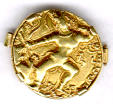
Silk Road trade: Gupta coin from India
India and Rome
As East-West trade along the Silk Road became more important, people began to look for other, less expensive routes. The Ptolemies in Egypt figured out how to use ocean currents to sail to India and back.
Who were the Ptolemies?
Roman ships and sailing
East Africa in the Middle Ages
The Romans, who were often fighting with the Parthian Empire to their east, used this route through Egypt and Arabia to India. Chinese traders also found ways to sail from China to India, avoiding the Sogdians. India became an important place for trade, as much as Afghanistan. India sold steel, and cotton cloth, medicines, and sugar.
Medieval Indian economy
Vikings and Russia
About 500 AD, the Sogdians and their neighbors in Central Asia figured out new things to trade – even more valuable and tradable than horses and cattle. Like the people of India, they began to make steel, and to produce sugar. In Egypt, the invention of knitting speeded up production of clothing, and traders sold knitted stockings and gloves all over.
Who were the Vikings?
Invention of knitting
Silver and the Silk Road
Early medieval Russia
The fall of the western part of the Roman Empire in the 400s AD left much of Europe too poor to do much trading. Further north, though, the Vikings figured out a new route through Russia to the Sogdians, and eagerly traded furs and amber and enslaved people for the good Central Asian steel. To the south, the Islamic Empire continued trading through Mecca to India.

Traders approaching Timbuktu in Mali, Africa
West Africa
When the Arabs conquered North Africa in the 600s AD, they expanded trade south across the Sahara and all along the coast of East Africa too. So most people in Africa could also buy steel, sugar, cotton cloth from India, and silk from China.
Medieval African economy
In exchange, the Africans sold gold, copper, high quality iron ore, and dried fish.

A medieval European farmer reaping
The end of the Silk Road
But by the end of the Middle Ages, people were building better ships. They were learning how to use a magnetic compass to sail out of sight of land.
Who invented the compass?
Medieval ships and sailing
That allowed them to use the oceans for more and more of their trade, and slowly they stopped using the Silk Road.
Learn by doing: A project in African medieval trade
Bibliography and further reading about the medieval economy:
Eyewitness: Money, by Joe Cribb (2000). Not the best in the series, but still a good introduction to exchange systems for kids.
The Roman Empire: Economy, Society and Culture, by Peter Garnsey and Richard Saller (1987). Two experts, but their writing is easy enough for high schoolers.
Rural Economy and Country Life in the Medieval West, by Georges Duby (reprinted 1998). Translated from French. A path-breaking account of what it was like to be a medieval peasant, though it can be hard to read.
